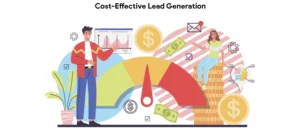Facebook advertising has become a powerful platform for businesses to reach their target audiences, engage customers, and drive conversions. One of the critical metrics in Facebook ads is CPM, or Cost Per Thousand Impressions, which helps advertisers understand how much they are paying for every 1,000 views their ad receives. Understanding CPM is essential for managing costs, increasing reach, and optimizing ad performance.
What Is Facebook Advertising CPM?
CPM, or “Cost Per Mille,” refers to the cost per thousand impressions an ad receives. Impressions measure how often an ad is shown to users on Facebook’s network, so CPM is the cost of showing your ad 1,000 times. It is calculated as follows:
CPM=(Total Cost of the AdTotal Impressions)×1000\text{CPM} = \left( \frac{\text{Total Cost of the Ad}}{\text{Total Impressions}} \right) \times 1000CPM=(Total ImpressionsTotal Cost of the Ad)×1000
CPM is one of the most popular bidding options in Facebook advertising, allowing advertisers to maximize visibility and reach with budget control.
Why CPM Matters in Facebook Advertising
Understanding CPM is essential to determining your ad budget and expected reach. Here are some reasons why CPM is essential in Facebook advertising:
- Cost Management: CPM helps control advertising spend, as it’s a predictable cost for a set number of impressions.
- Brand Awareness: CPM is an effective bidding strategy for campaigns focused on building brand awareness since it emphasizes reach.
- Benchmarking: CPM is a reliable metric for comparing the performance and efficiency of different ad creatives and targeting strategies.
Factors Affecting Facebook CPM
The cost of CPM on Facebook isn’t static; it fluctuates based on multiple factors. Here are some of the primary influences on Facebook CPM:
- Target Audience: Demographics, interests, and behaviors affect CPM. Highly competitive audience segments (e.g., popular age groups or high-income demographics) often have higher CPM rates.
- Ad Placement: Different placements (such as Facebook News Feed, Stories, or Instagram) come with varied CPM rates. For example, due to user engagement differences, Instagram placements may have a higher CPM than Facebook Stories.
- Ad Quality and Relevance Score: Facebook rates your ad’s relevance based on user engagement, click-through rates (CTR), and feedback. Ads with high relevance scores are more affordable, as Facebook rewards quality content.
- Seasonality: Costs can vary with demand. For instance, CPM rates typically increase during the holidaysseasonore brands compete for attention.
- Bidding Strategy: Facebook offers manual and automated bidding strategies. Automated bidding adjusts to deliver optimal results, while manual bidding gives you more control over costs.
Tips for Optimizing Facebook CPM
Optimizing CPM can help increase your ad’s effectiveness without overspending. Here are some strategies to make the most of your budget and achieve a lower CPM:
- Narrow Targeting: A well-defined audience ensures your ad reaches the right users, reducing wasted impressions and improving relevance scores. Use Facebook’s audience segmentation options to reach specific demographics.
- Use Engaging Creatives: High-quality visuals and compelling ad copy are essential to grab attention. Eye-catching designs and personalized messaging improve engagement and reduce CPM by boosting relevance scores.
- Test Ad Placements: Facebook’s automatic placements work well for broad reach, but consider testing specific placements to see which performs best. Optimizing placements can often lead to lower CPM rates.
- Adjust Bidding Strategy: Experiment with manual bidding to control your costs more precisely. Set a bid cap to limit how much Facebook can spend on impressions, helping to manage budget and CPM effectively.
- Utilize Lookalike Audiences: Lookalike audiences allow you to reach people similar to your current customers, improving targeting precision and reducing CPM due to increased relevance and engagement.
- Monitor Seasonal Trends: Be strategic about timing your campaigns. Avoid peak advertising seasons if your CPM is sensitive to cost changes, or allocate a larger budget during high-competition periods if the visibility boost is worth it.
Analyzing CPM Performance
Tracking and analyzing CPM trends over time is essential for optimizing your Facebook ad performance. Monitoring your CPM regularly allows you to spot shifts in your campaign effectiveness, audience engagement, and budget allocation.
- Key Metrics to Track Alongside CPM:
- Click-Through Rate (CTR): High CTR typically correlates with a lower CPM, as Facebook favors ads with better engagement.
- Conversion Rate: This measures how effectively impressions turn into actions, helping assess if CPM investment generates results.
- Frequency: Frequency indicates how often your ad is shown to each user, which can affect CPM and user experience. Too high a frequency may lead to ad fatigue.
Conclusion
Understanding and optimizing CPM in Facebook advertising is essential for cost-effective, impactful campaigns. Businesses can manage CPM rates and maximize their return on investment by focusing on audience targeting, ad relevance, and placement. With Facebook’s powerful analytics tools, marketers can continuously refine their CPM strategy to improve visibility, reach, and engagement while staying within budget.
To learn more or to acquire our services, please contact us at https://paypercampaign.com





